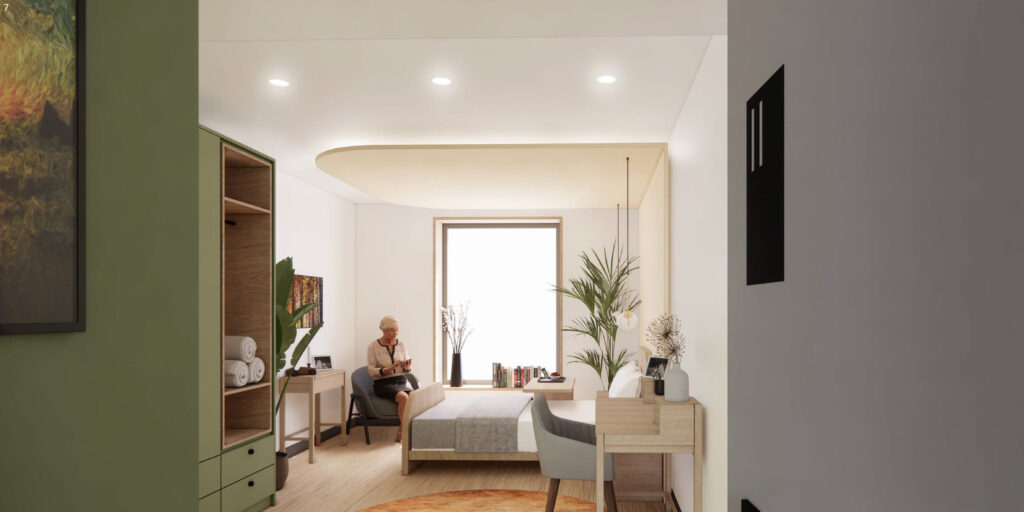
There is sometimes an undercurrent noticeable when evaluating the UK care environment such that the measure of what constitutes ‘good design’ is somehow different to other buildings; that their users dictate a different metric whereby the base-case solution often leans towards conservative traditionalism. As if to imply that the elderly’s tastes are only ever those of their formative years, when British Standard Magnolia (BS-08B15!) was more widely used.
As a practice our understanding of the challenges associated with care home design has increased rapidly over a short time, particularly designing spaces for those living with dementia. But it feels like we are still far from realising the full potential of these important buildings.
Admittedly, to do so requires some large changes in attitudes, something fundamental to the health of our society so as not to ghettoise the elderly who will become greater in number and fewer in supporting family, such is the current swing in demographics.

How we design our buildings could help this evolution and if there is one thing us architects know it is that one size certainly does not fit all. Never more so than for the residents of a care home. But that doesn’t mean separating the needs of the elderly from everyone else’s. Conversely, we feel the key to unlocking excellent care environments is to focus equal energies on the more universal aspects of needs which apply to us all; good buildings are good buildings after all.
Sustainability pressures
We are at a crossroads where our buildings have no choice but to improve. Regulations and standards are changing rapidly that enforce greater scrutiny on building performance in order to deliver a more sustainable built legacy in the years to come. Environmental factors are driving these changes and we are trying hard to stay ahead of the curve and exceed the statutory minimum, regardless of building type or project constraints
We increasingly centre our designs around biophilic principles. Biophilia is not a new concept and sets out a series of principles to bring nature into our built environments in order to better our general wellbeing. Rapidly improving the sustainability of the construction industry is critical so why not imbue the visible design with the same awareness of nature? There are only benefits to be had by telling this story with the introduction of either direct or indirect experiences of nature to our buildings.

Our most recent care home design is for a new build scheme on the Suffolk-Essex borders, called Haverhill, which uses biophilic principles as something that can universally benefit everyone. From the façade’s timber cladding which takes cues from the layers of under canopy and emergent planting of the surrounding trees, through the landscaped gardens and external secure terraces, to views at corridor-ends and lounge spaces to gardens at corner-nodes, the design looks to underscore its’ connection to nature at every opportunity. All bedrooms, lounges and circulation areas enjoy the same benefit, be the care residential, nursing or dementia specific.

This connection to nature is a theme explored at another of our designs, the Olive Grove care home, currently in planning, where a blend of pigmented blockwork and unstained timber cladding make for a series of facades with subtle colours differences that are meant to mimic the changing colours of foliage through the seasons. This carries through to internal colourways also. The Olive Grove is a dementia care specific design, where ease of navigation and building legibility are key. In addition to the considerations described at the Haverhill care home, at the Olive Grove every corridor-end has a discreet small lounge space with uninterrupted views across wide open countryside, as well as the landscape grounds and gardens of the home, which itself includes a franchise café connected via a secure covered Porte cohcere to the care home reception.
As mentioned previously and as embodied in our latest care home ideas, equal energies must be allocated to universal design objectives and to those that are very specific to the users’ needs. But the key to future success goes hand in hand with the right attitude; we must always give greater weight to what we can do with the design of our care homes rather than the limitations of what we can’t.




